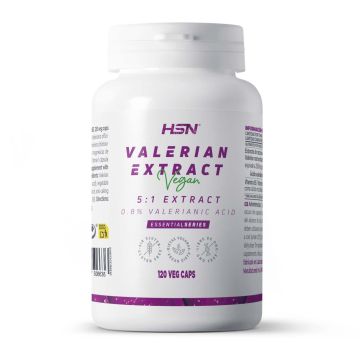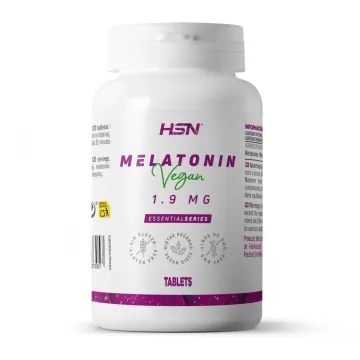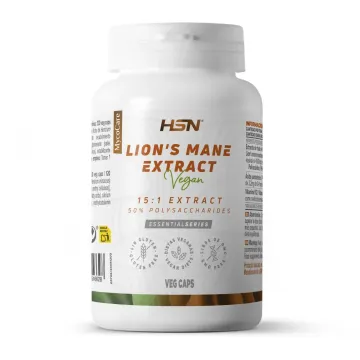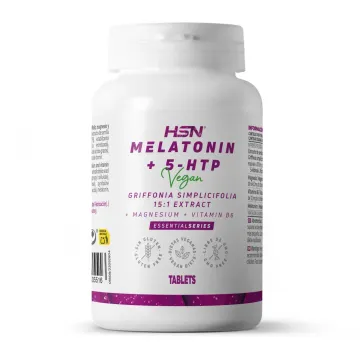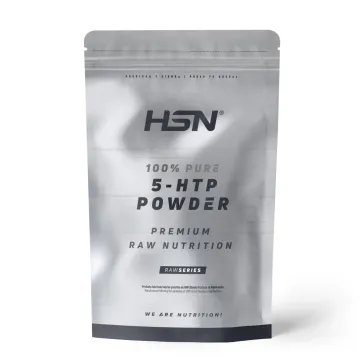- Magnolia extract - A thousand-year-old plant from the highest mountains of China.
- 100% bark extraction from Magnolia officinalis - the part of the plant richest in active compounds from magnolia.
- 18 times more concentrated - 18:1 extraction - without using harsh solvents that degrade its native composition.
- Standardized to 47.5% magnolol and 43% honokiol - The most recognized phytochemical compounds of magnolia.
- Formula with Vitamin B6 that supports the normal functioning of the nervous system.
- High concentration for easier use - You only need 1 veg cap a day.
Standardized Magnolia Extract in Honokiol, what is it?
Magnolia Extract (18:1) 300mg from EssentialSeries is a dietary supplement made from an extract 18 times more concentrated from the bark of the Magnolia officinalis tree, with added vitamin B6 to complement its action, in high concentration vegetable capsules (300mg of extract in each one).
Magnolia officinalis is a tree native to China, known for its properties in traditional Chinese medicine. Its trunk and root barks contain bioactive compounds, such as honokiol and magnolol, which the HSN extract is standardized to, and have a traditional recognition that has made this plant used for multiple purposes. Magnolia officinalis has persisted through the years and from its traditional use, dietary supplements have been developed that are now highly sought after.
With HSN’s formula, taking Magnolia has never been so easy. Enjoy a high concentration extract where you only need one capsule a day.
Learn more about Magnolia
Magnolia officinalis - An ancestral treasure
Magnolia officinalis has a long history dating back more than 2,000 years. In ancient China, this tree was mainly valued for its bark, which was harvested and dried for use in decoctions. According to ancient texts, it was used for various purposes and was common practice during the Han dynasty (206 BC – 220 AD), where it was recommended as part of herbal formulas to balance the body’s 'Qi,' according to their religious and moral beliefs. Over time, it became an essential component of many traditional herbal recipes.
With the expansion of TCM to the rest of Asia and later to the Western world, Magnolia officinalis continued to be recognized. In the following centuries, this plant was mentioned in several important botanical treatises, such as the Shen Nong Ben Cao Jing, a classic of Chinese herbal literature. During the Ming dynasty, magnolia bark was included in more recipes to address different purposes. Being a natural compound, its use remained limited, but its popularity slowly grew outside China.
More recently, with the rise of interest in natural compounds rich in phytochemicals in the Western world, Magnolia officinalis has been reintroduced as dietary supplements, usually as an extract, especially since the 20th century. Thanks to scientific advances, the plant’s active compounds were identified (mainly Honokiol and Magnolol), which allowed better identification, and it has been especially used in the US and Europe.
Why only talk about the bark?
The bark of Magnolia officinalis is the best part to prepare an extract as a dietary supplement due to its high concentration of bioactive compounds, especially honokiol and magnolol. These two compounds are found in higher amounts in the bark than in other parts of the plant, like leaves or roots. Also, they are the compounds studied as responsible for the plant’s recognized effects, making the bark the most valuable material for extraction. Harvesting and processing the bark allow obtaining these active principles more efficiently, facilitating their use in supplements.
Another reason we prefer using the bark is its homogeneity for processing and stabilizing as an extract. Unlike other parts of the plant, the bark has a tougher structure and is richer in fibers, which allows our extraction to be more durable and consistent in its key components. This ensures that the magnolia extract we develop, prepared solely from the bark, maintains its concentration over time and that the active ingredient levels are optimal to provide its effects.
How do I know the extract quality is good?
Because of its standardization.
Standardizing a herbal extract is important because it guarantees each dose contains a consistent and precise amount of the active compounds responsible for its attributed effects. This ensures homogeneity in every intake, regardless of natural variations.
Our Magnolia extract has been standardized to the two main active compounds of its native composition: Honokiol and Magnolol - Get to know them better in the next section!
Honokiol and Magnolol - Find them standardized
On one hand, Honokiol is a natural compound mainly found in the bark of Magnolia officinalis. Its molecular structure allows it to interact with various biological molecules, sparking interest in its study for different scientific applications. It has a bicyclic structure that gives it distinctive characteristics.
On the other hand, Magnolol is a compound structurally similar to honokiol, sharing many characteristics. Its chemical formula features two carbon rings, making it part of the lignan family. Its chemical structure gives it specific traits that slightly differentiate it from honokiol.
Both phytochemicals are characteristic of magnolia, and have been studied as the reasons behind the plant’s long-standing interest.
Find both compounds standardized in our extract, with a guaranteed content of:
- 47.5% magnolol.
- 43% honokiol.
Magnolia officinalis is a plant you want to know about
Although magnolia can be used any time of day, many users prefer taking plant extracts at night, before sleeping. Especially in the formula we present, since thanks to vitamin B6 it supports the normal functioning of the nervous system.
Magnolia is attributed properties such as supporting intestinal tract function and helping maintain intestinal regularity, but it’s not only associated with digestive effects; it also helps maintain joint mobility and flexibility and contributes to resilience during the premenstrual cycle.
So it’s an ideal extract for people of any age and gender, as well as any physical activity level.
Know Stress Care? It’s the perfect supplement!
Magnolia extract, due to the properties mentioned above, pairs well with other HSN products like joint health collagen, GI Biotics powder, or PMS Care.
But if there are two products that stand out especially in combination with this extract, they are:
Try them together!
Bibliographic references
- Fontana, R., Mattioli, L. B., Biotti, G., Budriesi, R., Gotti, R., Micucci, M., … Vertuani, S. (2023). Magnolia officinalis L. bark extract and respiratory diseases: From traditional Chinese medicine to western medicine via network target. Phytotherapy Research, 37(7), 2915–2938.
- Shen, K. P., Chang, C. D., Hsieh, M. H., & Chaung, H. C. (2023). Efficiency and Mechanism Evaluation of Magnolia officinalis Water Extract in Preventing Gastric Ulcer. Evidence-Based Complementary and Alternative Medicine, 2023, 7901734.
- Niu, L., Hou, Y., Jiang, M., & Bai, G. (2021). The rich pharmacological activities of Magnolia officinalis and secondary effects based on significant intestinal contributions. Journal of Ethnopharmacology, 281, 114524.
- Talbott, S. M., Talbott, J. A., & Pugh, M. (2013). Effect of Magnolia officinalis and Phellodendron amurense (Relora®) on cortisol and psychological mood state in moderately stressed subjects. Journal of the International Society of Sports Nutrition, 10(1), 37
 Before
Before After
After During
During Morning
Morning Afternoon
Afternoon Night
Night Before
Before After
After During
During Morning
Morning Afternoon
Afternoon Night
Night








